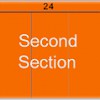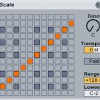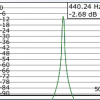Arranging Dance Music
A dance track usually has a looser structure than a hip-hop or pop song — but it does have a structure. Following a structure when you’re arranging your track makes it more DJ-friendly — and therefore more likely to get played out in a club. Using a structured arrangement for a house (or trance, electrohouse, techno, or pretty much any four-to-the-floor genre) song can also help build a collection of loops into a proper track. The most important rule to remember when arranging your production is that every section of the track needs to be evenly divisible by eight bars. Practically speaking, this means that, unless you’re making 14-minute progressive epics, each section of the track will be 8, 16, 24, or 32 bars long:

Intro
The track’s intro should make it easy for the DJ to mix it in. A simple intro can consist of just the kick, the snare and maybe some percussion; more complex intros can include short synth stabs or vocal samples. Keep the intro section spare and lean — it shouldn’t contain more than two or three elements at most. The intro should usually be 8 or 16 bars long.
First Section
Start the bassline at the beginning of the first main section. Introduce some extra percussion and one of the synths during this section of the track. Don’t include the main hook in the arrangement yet though — you’re still building up to that.
First Breakdown
The first breakdown section provides a mini-break between the first and second sections. Often, the drums will drop out for 4 to 8 bars, or — conversely — everything but the drums will stop.
Second Section
The second section of the track is usually fairly similar to the first, with a few variations thrown into the mix. You can switch up the percussion in the second section, for example, and/or add a new synth to the mix. During this section, you can start hinting at the main riff or hook: try cutting the hook down to a few short notes, and incorporate them into the second section.
Breakdown
During the breakdown, the drums (and usually the bass) drop out completely. The synths build up to a peak; now can be a good time to introduce the main hook of the song. A classic way to introduce the main riff is to start playing it through a low-pass filter at the beginning of the breakdown, then gradually raise the filter’s cutoff control over the course of the break. You can also pare the hook down to a few notes, then slowly add notes to the melody over the course of the breakdown. Use a riser and/or a drum roll at the end of the breakdown to lead into the peak section of the track. The breakdown can be 8, 16 or 32 bars long, depending on how epic a buildup you want.
Peak Section
The peak section pulls out all the stops. Think of this section as the chorus of your track — it should include the main hook, the full drums, the bass, and any other melodic elements you want to add. You can also incorporate another mini-breakdown — as short as a bar or two — into the peak section. Keep the peak section going for at least 32 bars.
Outro
Like the intro, the outro is mainly for the DJ. One common outro technique is to cut out the bass, then slowly fade out the main synth or vocal while keeping the drums going until the end. You can also drop out the kick drum, allowing the DJ to mix the kick from the next track into the percussion from yours.
These are all, of course, just general guidelines to help make your track work on the dancefloor. Once you understand the structural rules, feel free to break them. Delaying the start of the peak section by one bar, for example, can sound fantastic.
For composition and arrangement for specific genres, check out these videos.






